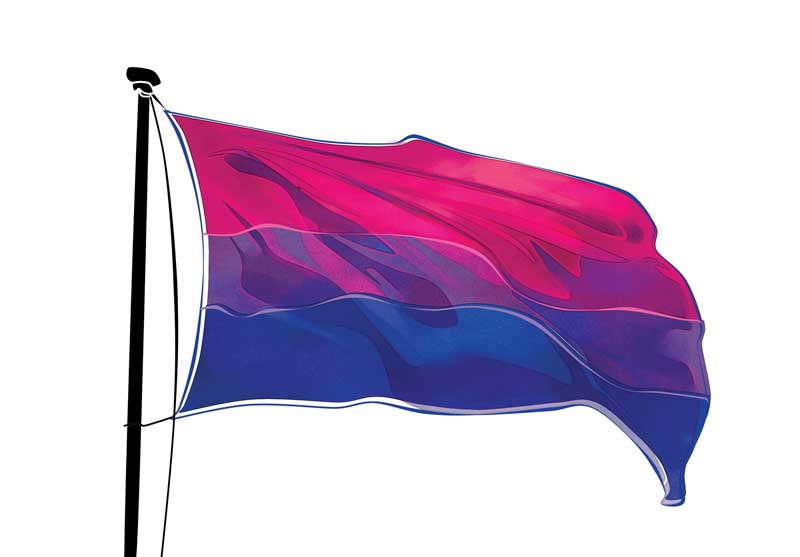
Many terms related to queerness have undergone changes to their definitions over the years. “Bisexuality” is one of these terms, given its origins in a transmisogynistic world and its evolution alongside the growing transpositivity of queer spaces.
The term bisexuality may now seem cissexist because it reinforces the gender binary with the Latin prefix “bi” generally meaning “two,” leading to the common definition of bisexuality as the attraction to ‘both’ genders. Why would one identify as bisexual if there are far more inclusive options out there, such as polysexual, or the all-encompassing pansexual?
While it is entirely valid to prefer to identify as one of these terms, it is not appropriate to say identifying as bisexual is oppressive. Identity policing is counter-intuitive to the acceptance and cooperation we in the queer community should strive for – why pit us against each other for no good reason? The myth that bisexual people are only attracted to binary genders is incorrect, as is the assumption that the label “bisexual” implies there are only two genders.
Bisexuality: A Western history
Bisexuality has been recorded in human activity since before classical history. According to Violet Carson’s timeline in History of Bisexuality, it was Charles Gilbert Chaddock who first used the term “bisexual” as a sexual orientation in his translation of Psychopathia Sexualis in 1892. At that time, few people publicly identified as bisexual, one of the exceptions being the poet Edna St. Vincent Millay.
Most significantly, the Christopher Street Liberation Day Parade (which marked the first anniversary of the 1969 Stonewall Riots and developed into the Pride parades we see today) was coordinated by activist Brenda Howard, who was bisexual. A major reason why people who identify as bisexual wish to hang onto the term is because of this activist history. As is the case with most terms related to queerness, including queerness itself, we keep these identities in order to honour and recognize the struggles of our predecessors, even if their terms then were more limited in definition than they are now. Rejecting the terms that they created for us breaks the strength of institutional memory and would fail to honour the progress that they started.
Modifying the definition of bisexual
Many bisexuals today, and even some of the past, define bisexuality as the attraction to people of two genders. This does not necessarily refer to men and women, since a person who identifies as bisexual may be attracted to women and non-binary folk. This addresses the roman prefix that so many biphobic individuals use to reject bisexuality. An alternate, and more common, definition is that bisexuality means the attraction of a person to two or more genders. While that may be too close to the definition of pansexual for some, it is inclusive and cognizant of its history. Many people consider bisexuality and pansexuality to be interchangeable under this definition, in which case the individual’s choice of label is entirely up to their personal preference.
Although some do define bisexuality in the binary sense, therefore erasing anyone whose gender is not in the gender binary, the definition does not itself remain archaic.
In short, it is up to the individual to identify themselves. Unless someone defines their identity in an explicitly exclusive and oppressive way, no one should be able to police it.

